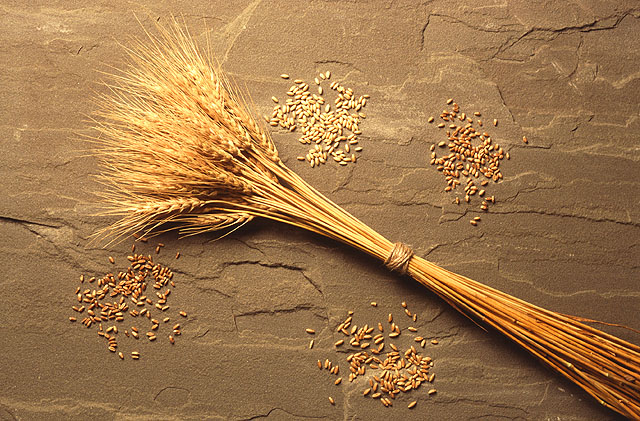By Jan Suszkiw, Agriculture Research Service

Scientists have developed a sensitive new tool for identifying the fungus that causes “wheat blast,” an emerging disease of the important grain crop.
A team of U.S. Department of Agriculture (USDA) and university scientists has developed a sensitive new assay method for detecting the fungus that causes “wheat blast,” a disease of wheat in South America and, most recently, Bangladesh.
The fungus Magnaporthe oryzae triticum (MoT) was first detected in Brazil in 1985. The disease has moved into the neighboring countries of Argentina, Bolivia and Paraguay, but wheat blast hasn’t been reported outside of South America—that is, until February 2016, when MoT was confirmed in wheat crops in Bangladesh.
Concerned that MoT could enter the United States and “blend in” with native strains of M. oryzae and evade rapid detection, scientists from USDA’s Agricultural Research Service (ARS), Kansas State University and the University of Kentucky devised a method to home in on a specific region of the fungus’ genome that distinguishes it from other “look-alike” strains. The team reported the advance in September in the “First Look” section of the journal Plant Disease.
According to ARS plant pathologist Kerry Pedley, the method also distinguishes MoT from Fusarium graminearum, another fungal foe of wheat that causes disease symptoms similar to wheat blast. Symptoms include bleached grain heads and shrunken, malformed kernels of poor quality that greatly diminish marketability. Severe outbreaks of wheat blast can inflict 100-percent yield losses, making it a serious food-security threat given the grain’s status as a staple food for much of the world.
Traditional methods of diagnosing wheat blast include examining infected plants for the presence of spore-like structures, called “conidia.” Procedures that genetically detect M. oryzae fungi are also used. However, they’re limited to species-level identifications and can’t distinguish among different fungal strains. This lack of specificity can hamper wheat blast-monitoring efforts and lead to false detections, as well as costly regulatory actions to contain a suspected occurrence, notes Pedley, with ARS’s Foreign Disease-Weed Science Research Unit in Fort Detrick, Maryland.
The new method overcomes this drawback by targeting a genomic marker unique to MoT. In tests, it accurately distinguished all known strains (or “pathotypes”) of MoT from more than 280 specimens of M. oryzae collected from around the world, including from South America and Bangladesh.
The method yields results in less than 24 hours and is sensitive enough to detect trace amounts of the target sequence in samples, making it a valuable surveillance tool for field use, laboratory diagnosis, and port-of-entry inspections, among other applications.
ARS is USDA’s principal in-house scientific research agency. These research outcomes are the product of a collaborative project led by Kansas State University and involving several other land-grant university partners. The research was made possible by a competitive grant from USDA’s National Institute for Food and Agriculture and additional support from ARS.
More information about the image:
Across the country, ARS scientists who work with wheat aim to make U.S.-grown grain better all the time. It’s not an easy job. Techniques for successfully slipping new genes into crops like tomatoes or petunias typically don’t work on wheat.
But years’ worth of efforts have brought about many hard-won victories. A yardstick for our wheat-breeding success is the popularity of the new varieties we’ve come up with.
One variety alone accounts for most of the soft red winter wheat that’s grown in the Eastern United States. Why? Because it stands up to wheat’s most destructive disease, leaf rust.
Other varieties have amazed even dubious wheat farmers by resisting the Hessian fly and cereal leaf beetle, two costly insect pests. This wheat-breeding program is conducted in cooperation with Purdue and Kansas State Universities.
And we expect more progress in the future. The wheat plants of tomorrow may be genetically tailored quickly and easily to yield more nutritious flour or more effectively fend off insects and disease, now that ARS scientists have found shortcuts for shuttling new genes into wheat embryos.
Growers can increase their expertise, thanks to an ARS-developed computer program called MoreCrop. At the touch of a few buttons, a grower can get customized advice on diseases to watch out for and treatments that are appropriate to specific conditions.
Photo by Scott Bauer.










